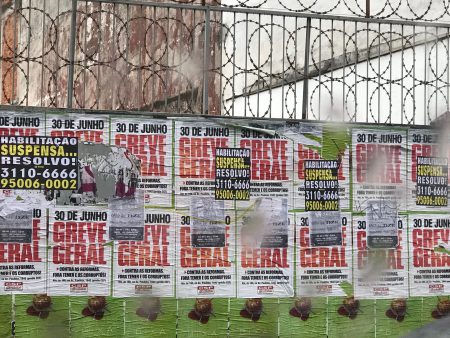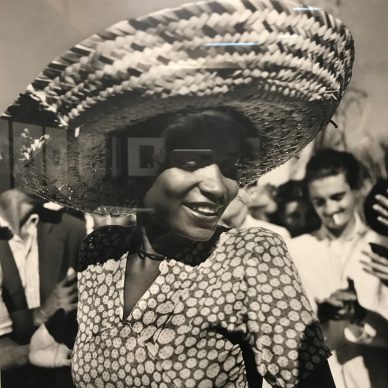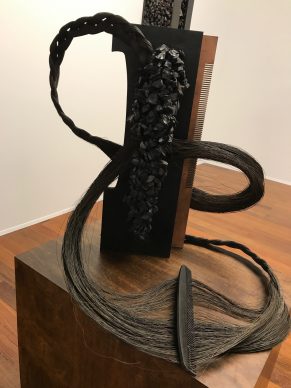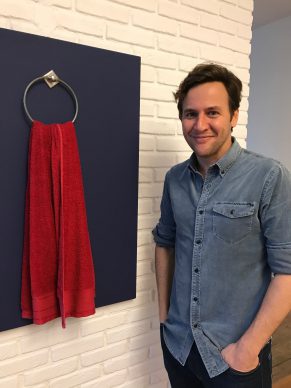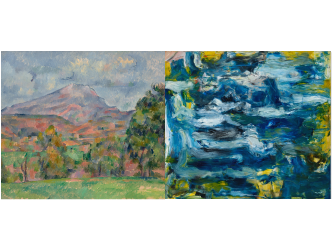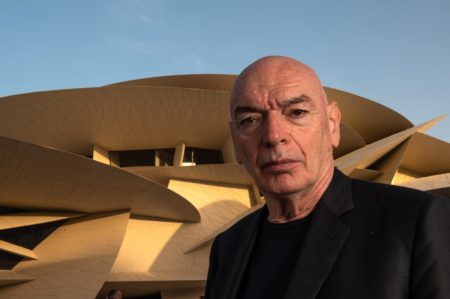It was only few years ago, in the small circle of the international art market, that Brazil was considered a new Eldorado at the heart of which two contemporary art fairs were established, in Rio and Sao Paulo.
Testament to their pulling power, they attracted the gallery titans of the international art market.
But since then the price of oil has fallen, the rising middle classes have been steamrolled, all levels of government have been embroiled in corruption scandals and violence has shot up, particularly in Rio.
In Sao Paulo, however, a group of four people (Luisa Strina, the famous Brazilian gallerist, Emilio Kalil, Rio’s ex secretary for culture, Thiago Gomide, a gallerist, and Ricardo Sardenberg, an independent curator) have created an artistic and commercial event, Semana de Arte, from 14 to 20 August.
It’s a week dedicated to art with shows, conferences etc. Its high point is a small fair assembling 38 participants, the majority of them Brazilian.
It was difficult to understand how in such a depressed environment a new event could see the light of day.
It must be said, it is an extremely selective fair composed principally of big names from the history of art and new Brazilian talent. From the first days the results of the sales were even fairly positive and the general quality of the offer was excellent.
Luisa Strina who opened her gallery in 1974 in Sao Paulo explains:
‘We have to begin to overcome this crisis which we’ve been experiencing for two years now. And then, there is always money here.’
Emilio Kalil adds:
‘Perhaps this crisis is going to be a wake up call.’
Antonio Goncalves Filho, one of the most famous chroniclers of the Brazilian cultural scene, who writes for the daily Estadao de Sao Paulo, says paradoxically: ‘The art market is not suffering from the economic crisis.’
Ricardo Rego, who is taking part in the Semana de Arte with his Rio-based gallery Lurixs, is opening a new and larger space this week. A specialist in the secondary market for contemporary Brazilian artists, he observes that there has been a increase in the credibility of Brazilian artists from the 50s internationally:
The Rio gallery A Gentil Carioca, one of the most important names in the Brazilian art landscape, was founded by three partners, including artist Ernesto Neto. Elsa Ravazzolo Bolner, wife of one of the founders, is on the stand of the Semana de Arte fair. She discusses the crisis and the economic vibrancy of Sao Paolo compared with Rio:
On of the major artists on the Brazilian art scene was Tunga (1952-2016). His highly narrative work plays with symbols and addresses topics including violence and sexuality.
At the fair his three galleries, Millan from Sao Paulo, Franco Noero from Turin and Luhring Augustin from New York, have joined forces to show a group of his works, on sale for between $15,000 and $250,000.
Cristina Tolovi from the Millan gallery explains why Tunga is so important.
Among the most high profile young artists on the Brazilian scene is Jonathas de Andrade (born 1982) who has shown at the Guggenheim in New York, at Performa also in New York, at the Lyon Biennale and more recently at the Sao Paulo Biennale. Carolyn Alexander from Alexander and Bonin of New York has made the journey especially to present his work about fishermen, who he portrays cradling the fish they have just caught.
It is a work that is simultaneously social, sensual and poetic. The prints, limited to eight, carry a $7,500 price tag. Carolyn Alexander speaks about how nowadays she has less faith in the virtues of large international fairs:
However the biggest obstacle to the blossoming of this very young fair on the international market is that the taxes to be paid on importing works can stretch to 40%.
It is a prohibitive rate which ensures that all the pieces shown by foreign galleries are on a temporary import permit. Where the works are bought, they will undoubtedly hang in the apartments which Brazilian collectors own overseas.
Before leaving, I visited Auroras, a new venue located in a residential neighbourhood.
It was opened just over a year ago by Ricardo Kugelmas, the former studio director for American artist Francesco Clemente.
It is a 1950s modernist house and here he holds temporary exhibitions without an exclusive link with the artists.
You can find several paintings by the last living American Pop painter Alex Katz or a conceptual work from 1971 by the Brazilian Paulo Bruscky (born 1949) that simply consists of a serviette on a serviette holder. The title is ‘Nao Jogue a Toalha’ meaning ‘Don’t Throw the Towel In’.
It was created in a spirit of opposition to the military regime at the time.
Ricardo Kugelmas underlines that this phrase couldn’t be more relevant today.
In the context of the major ‘clean hands’ operations sweeping through the country, the message has to be: don’t throw the towel in.
Support independent news on art.
Your contribution : Make a monthly commitment to support JB Reports or a one off contribution as and when you feel like it. Choose the option that suits you best.
Need to cancel a recurring donation? Please go here.
The donation is considered to be a subscription for a fee set by the donor and for a duration also set by the donor.



